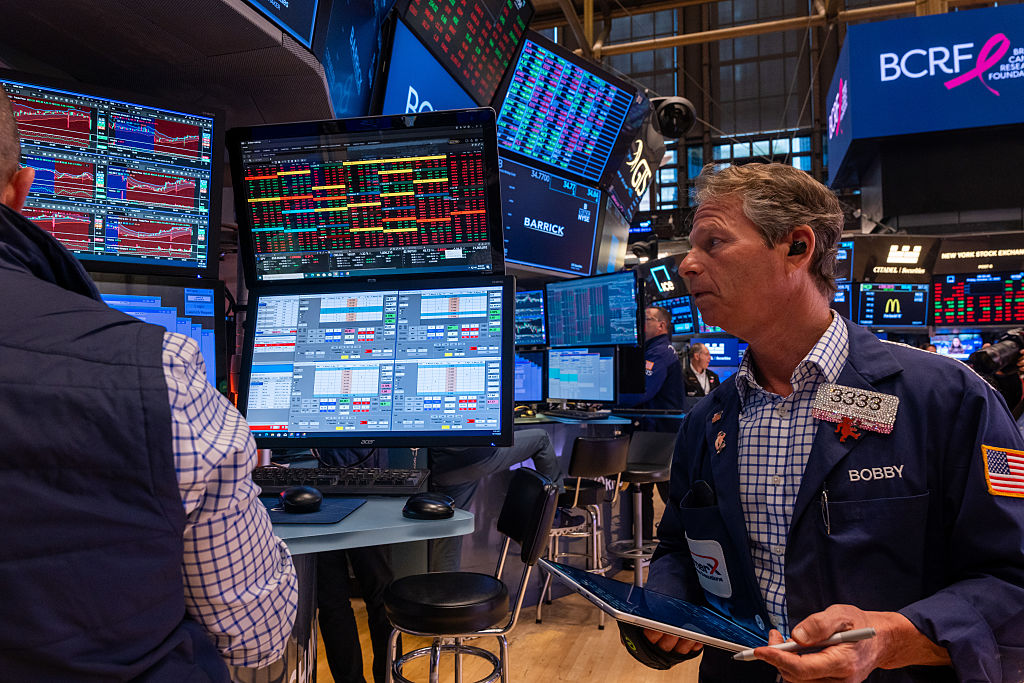What does 2006 hold for the Dow?
Some say that stock market activity in January is a good indicator of what will happen later in the year. So what should investors be watching out for?
It is very likely that 2006 will see an eventual end to the two-year trading range suffered by the Dow Jones Industrial Average. We hope that is so because its ending will be a reliable and important signal for future stock market action. As we have said repeatedly over recent months, should this two-year range end with a break to the upside above 11,000, we will increase our stock market exposure, particularly to Asian markets, such as India, China, and South Korea. We already enjoy significant exposure to the Japanese stock markets. Since the last issue we have added a further 5% holding of JPMF Japan fund to most portfolios.
We continue to view technology investments as a future opportunity if the Dow Jones gives the positive signal. Current holdings in UK bear funds would be put under pressure; these would probably be sold on the same positive signal.
Our long-term view is that the primary bear market for major equity markets is still unfinished. It causes us to expect the eventual signal from the Dow Jones Industrial Average to be a break to the downside. The first indication of this would be weakness below 10,700. Such a development might put existing Japanese positions under pressure, but give very strong support to bear fund positions probably triggering an increase.
MoneyWeek
Subscribe to MoneyWeek today and get your first six magazine issues absolutely FREE

Sign up to Money Morning
Don't miss the latest investment and personal finances news, market analysis, plus money-saving tips with our free twice-daily newsletter
Don't miss the latest investment and personal finances news, market analysis, plus money-saving tips with our free twice-daily newsletter
It is often said that stock market activity in the month of January (the January barometer) is a clear indicator of what to expect for the balance of the year. There is an element of truth in this and so we will be watching the year's first month carefully.
The American economy is sending mixed signals. Over the last week the yield curve has been flirting with inversion, with moments when the ten-year yield has been lower than the two-year yield. As we have repeatedly said, an inverted yield curve more often than not predicts a recession. Somewhat surprisingly at the same time the US Conference Board's Consumer Confidence Index for December rose to 103.6 compared to 98.3 in November. Such confidence is even more surprising, as according to the Wall Street Journal, sales of new homes in November took the biggest one-month tumble in nearly 12 years and the median price of new homes sold in November fell 4.1% to $225,200 compared to $234,800 in October.
In the UK, greater optimism has been expressed with regards to the housing market. The headline in the Business Section of the Daily Telegraph on 22nd December was We were wrong, say house price gloom-mongers'. They said that, amongst others, economist Roger Bootle's Capital Economics had recently conceded that the scarcity of new housing, with easier access to mortgages, defends property prices against a sharp drop, scaling back its forecast to a modest 5% fall over two years.
In our view, it is premature to resurrect this sick patient to recovery status. Sentiment about the housing market will always ebb and flow. We will therefore watch with great care for future indicators.
We will start the New Year with as open a mind as is possible, determined to pick up on key stock market investment signals wherever and whenever they occur.
By John Robson & Andrew Selsby at RH Asset Management Limited, as published in the Onassis Newsletter, a fortnightly newsletter that gives insight into the investment markets.
For more from RHAM, visit https://www.rhasset.co.uk/
Get the latest financial news, insights and expert analysis from our award-winning MoneyWeek team, to help you understand what really matters when it comes to your finances.
MoneyWeek is written by a team of experienced and award-winning journalists, plus expert columnists. As well as daily digital news and features, MoneyWeek also publishes a weekly magazine, covering investing and personal finance. From share tips, pensions, gold to practical investment tips - we provide a round-up to help you make money and keep it.
-
 Why Trustpilot is a stock to watch for e-commerce exposure
Why Trustpilot is a stock to watch for e-commerce exposureTrustpilot has built a defensible position in one of the most critical areas of the internet: the infrastructure of trust, says Jamie Ward
-
 Tetragon Financial: An investment trust with stellar returns
Tetragon Financial: An investment trust with stellar returnsTetragon Financial has performed very well, but it won't appeal to most investors – there are clear reasons for the huge discount, says Rupert Hargreaves

